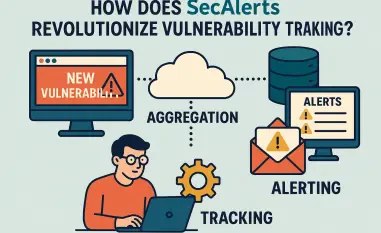What happens when a trusted tool in a developer’s arsenal turns into a silent predator? Picture a seemingly harmless library, downloaded thousands of times, quietly siphoning off cryptocurrency keys while blending seamlessly into the NuGet ecosystem. This isn’t a dystopian fantasy but a stark reality that unfolded with a deceptive package named “Netherеum.All,” revealing a chilling vulnerability in software supply chains. The subtle trick of a single character swap exposed how easily trust can be weaponized in the digital age, leaving developers and their projects at risk.
The significance of this incident cannot be overstated. Supply chain attacks, particularly those targeting open-source repositories like NuGet, have surged in recent years, exploiting the very platforms that millions rely on for building secure software. With hackers leveraging sophisticated tactics to impersonate legitimate tools, the stakes are higher than ever—especially when sensitive data like cryptocurrency wallet information is on the line. This story isn’t just about one malicious package; it’s a wake-up call about systemic flaws in package management and the urgent need for vigilance in an increasingly treacherous landscape.
Why NuGet Attracts Cybercriminal Attention
NuGet, a cornerstone for .NET developers, hosts countless libraries that power modern applications, but its open nature has become a double-edged sword. The platform’s accessibility and massive user base make it an ideal hunting ground for threat actors looking to infiltrate projects on a grand scale. Unlike stricter ecosystems such as PyPI or npm, which enforce tighter naming conventions, NuGet’s policies allow for non-ASCII characters, creating loopholes that hackers exploit with alarming ease.
This leniency sets the stage for deception at a systemic level. A single malicious package can cascade through dependencies, affecting thousands of applications before detection. With cryptocurrency-related libraries being prime targets due to their access to high-value data, the potential for catastrophic damage grows exponentially. The ecosystem’s trust-based model, while fostering collaboration, often leaves developers exposed to risks they may not even recognize until it’s too late.
The Anatomy of a Sneaky Attack
At the heart of this particular breach lies “Netherеum.All,” a package uploaded on October 16, 2025, that mimicked the legitimate Nethereum library—a popular tool for Ethereum integration in .NET. By swapping a standard ‘e’ with a Cyrillic ‘e’ (U+0435), the name appeared nearly identical to the untrained eye, banking on developers’ quick glances during package selection. This visual trick, known as a homoglyph attack, proved devastatingly effective in luring unsuspecting users.
Beyond the clever naming, the attackers fabricated credibility through sheer numbers. Using automated scripts with rotating IPs and user agents, they inflated download counts to an astonishing 11.7 million, pushing the package higher in search rankings and creating a false sense of trustworthiness. Hidden within the code, a function named EIP70221TransactionService.Shuffle decoded an XOR-encoded string to connect to a remote server, quietly exfiltrating sensitive data like mnemonic phrases and private keys.
The deception didn’t stop with one attempt. Another package, “NethereumNet,” uploaded earlier by the same actor under the alias “nethereumgroup,” displayed identical malicious behavior, revealing a pattern of calculated abuse. Though NuGet’s security team eventually removed both packages within days for violating terms of use, the incident exposed how easily such threats can slip through initial defenses, exploiting both technical gaps and human oversight.
Voices from the Security Frontline
Experts in cybersecurity have sounded the alarm on this growing menace, emphasizing that these attacks are far from isolated. Security researcher Kirill Boychenko noted that inflating download stats through scripted automation has become a standard tactic among hackers to manipulate perceptions of legitimacy. His insights highlight a disturbing trend where trust metrics, often taken at face value, are weaponized against the very community they’re meant to protect.
Further analysis from organizations like Socket and ReversingLabs paints an even grimmer picture. Socket’s deep dive into the malware revealed sophisticated mechanisms for data theft, while ReversingLabs pointed out that homoglyph-based typosquatting in NuGet has been documented since at least July 2024. Their reports underscore a critical flaw: unlike other repositories that restrict naming to ASCII characters, NuGet’s lack of such safeguards continues to enable these deceptive practices, leaving the ecosystem vulnerable to repeated exploitation.
The Broader Threat Landscape
Beyond this specific case, supply chain attacks represent a mounting crisis in software development. As developers increasingly depend on third-party libraries to accelerate workflows, the risk of integrating malicious code grows. These incidents aren’t merely technical failures; they exploit psychological biases, banking on the assumption that popular packages are inherently safe—an assumption that threat actors are all too eager to manipulate.
Historical patterns add weight to the concern. Over the past year, multiple reports have flagged similar typosquatting attempts across open-source platforms, with NuGet emerging as a frequent target due to its permissive policies. If left unaddressed, this vulnerability could erode confidence in collaborative ecosystems, forcing a reevaluation of how trust and security are balanced in the rush to innovate.
The financial implications are equally stark, especially for cryptocurrency-focused tools. With billions of dollars tied to digital wallets, a single breach can lead to irreversible losses for individuals and organizations alike. This reality amplifies the urgency of addressing not just the symptoms of these attacks but the root causes embedded in platform design and user behavior.
Safeguarding the Developer Ecosystem
Amid these sophisticated threats, developers must adopt proactive measures to shield their projects from deception. Start by verifying the identity and history of package publishers—legitimate teams like the creators of Nethereum often have established reputations, unlike dubious accounts such as “nethereumgroup.” A quick check can reveal red flags before a download even occurs.
Equally critical is scrutinizing metrics that seem too good to be true. Sudden spikes in popularity, like the inflated 11.7 million downloads of the malicious package, warrant skepticism and cross-verification with community feedback. Additionally, inspecting package names in a text editor can uncover hidden non-ASCII characters, while monitoring network activity post-installation can detect unauthorized outbound connections to suspicious servers.
Leveraging automated tools offers another layer of defense. Security scanning software and repository monitoring services can flag potential threats before they infiltrate a system. By embedding these practices into daily workflows, developers can build resilience against the evolving tactics of supply chain attacks, turning awareness into action in a landscape rife with hidden dangers.
Reflecting on a Cautionary Tale
Looking back, the saga of “Netherеum.All” served as a stark reminder of how fragile trust can be in digital ecosystems. The subtle deception of a single character swap, paired with manipulated metrics, managed to pierce the defenses of countless developers, exposing sensitive cryptocurrency data to unseen predators. It was a breach that lingered in the minds of many as a symbol of unchecked vulnerabilities.
Yet, from those ashes emerged a clearer path forward. Strengthening NuGet’s naming policies to exclude non-ASCII characters stood out as a tangible step to curb homoglyph attacks. Encouraging platform-wide adoption of stricter verification processes for uploaders also gained traction as a necessary evolution. Most importantly, fostering a culture of skepticism among developers—where every package is questioned before integration—became a cornerstone for future safety.
As the dust settled, the focus shifted to collaboration between platforms, security experts, and the coding community to anticipate the next wave of threats. Building automated detection systems to spot fabricated download surges and enhancing real-time monitoring of malicious payloads were identified as critical next steps. The lessons learned from this incident paved the way for a more fortified software supply chain, ensuring that trust, once broken, could be rebuilt with vigilance and innovation at the helm.













